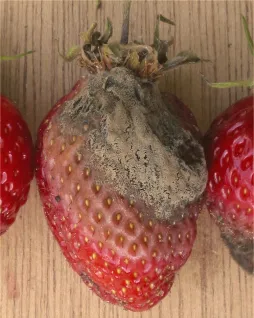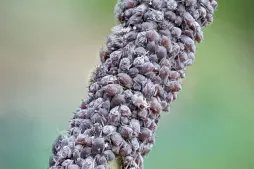Rhododendron japonicum, the Japanese azalea
If you travel to Japan between mid-March and June, you'll visit temples, shrines and parks surrounded by Rhododendron japonicum. You can't travel that far, but you'd like to enjoy the colorful blooms of the Japanese azalea? Just plant a few feet of it in your garden. This plant of the Ericaceae family is hardy and adapts to almost any climate.
How to recognize the Japanese azalea, Rhododendron japonicum?
The Japanese azalea is a bushy shrub. It doesn't exceed two meters in height and one meter in spread.
The trunk and branches are highly branched. Their wood is covered with gray or brown bark.
Japanese azaleas are evergreen shrubs. Their oval, leathery, glossy leaves are green, plain or variegated with white in some hybrids.
In spring, Rhododendron japonicum blooms with trumpet-shaped flowers. Color, like shape, depends on the variety. Blooms can be pink, white, violet, red or mauve. Some shrubs bear single, five-petaled flowers, others double. But all cultivars have only five stamens! This detail differentiates azaleas from simple rhododendrons like rhododendron yakushimanum, whose flowers have a dozen stamens.
Rhododendron japonicum is highly toxic to animals and humans. If ingested, the plant causes digestive disorders and burning of the mucous membranes. These symptoms may be associated with neurological and cardiac damage.
Our maintenance tips
Japanese Azaleas thrive in acid soil. If your garden soil is alkaline, plant in pots.
Watering
To find out if your plant is thirsty, stick your finger in the soil. When the surface is dry (about three centimetres), then you need to water your Rhododendron japonicum. Japanese Azaleas like moisture, but not stagnant water. Make sure that the potting soil remains moist, but that the rootlets are not drowned.
If you can, use non-calcareous water such as rainwater or filtered water.
Also make sure that water doesn't stagnate in the saucer or planter.
If you can, use non-calcareous water such as rainwater or filtered water.
Also make sure that water doesn't stagnate in the saucer or planter.
Repotting
When the roots escape from the pot, it's time to repot your Japanese azalea.
Get a new pot with a slightly larger diameter and depth than the previous one. Pour a bed of clay balls or gravel into the bottom for drainage.
Japanese Azaleas plants like light, rich, well-drained soil. Fill your pot with a mixture of one third potting soil for green plants, one third sand and one third heather soil.
Remove your Rhododendron japonicum from its old container. If the roots have begun to turn in circles, untie them. Place your subject in the center of the pot and fill in with substrate. Tamp and water for the first time.
Fertilization
You can stimulate the growth of your plant during its growth phase, in spring and summer, with fertilizer.
Apply a fertilizer for flowering or acid-loving plants. Follow the manufacturer's instructions to avoid damaging the foliage.
Prune
To encourage the growth of your Japanese azalea, prune regularly.
You don't need to prune your Japanese azalea. Just remove wilted flowers and dead leaves.
You can also cut away dead wood with clean, sharp pruning shears.
Plantation
Once the last spring frosts have passed, you can plant.
Choose a location in partial shade, under a tree for example.
Soak the rootball of your Japanese azalea, preferably in rainwater. Meanwhile, dig a hole twice as wide and as deep as the rootball.
Plant your Japanese azalea and backfill with a mixture of garden soil, heather and compost. If your soil is heavy, add gravel or sand to improve drainage.
Tamp and water to encourage rooting. Mulch with organic matter, such as pine bark, to keep the soil cool.
Cutting
Select a branch that has not yet flowered and whose tip is still flexible.
Take a section about ten centimetres long. Cut with clean, sharp pruning shears below a node.
Dress your cutting. Remove the leaves on the lower half of the shoot. You can reduce the size of the others by half.
Fill a pierced pot with a mixture of universal potting soil(1/3), sand(1/3) and heather (1/3). You can also use potting soil for seedlings and cuttings mixed with perlite. Form a pre-hole and plant your cutting in the center. Pack lightly.
Cutting is done in a smothered fashion. Place your Japanese azalea in a mini greenhouse or translucent crate. You can also cover it with a transparent plastic bag.
Your cutting needs humidity to develop. Fog the leaves and potting soil whenthey are dry, to maintain a high level of humidity. But beware of rot! You need to aerate for a few minutes every day to avoid rot.
Diseases / Threats
Information
| Family | Ericaceae - Ericaceae |
| Type | Rhododendron - Rhododendron |
| Species | Japanese azalea - Rhododendron japonicum |
| Lifecycle | Perennial |
| Foliage | Evergreen |
| Exposure | |
| Substrats | |
| Planting methods |
Open ground In pots In tubs |
| Categories | |
| Tags |
Beginner Flowery Rustic Toxic |
| Origin |
Southeast Asia |
| Hardiness (USDA) | 6a |
| Leaf color |
|
| Flower colors |
|
Discover plants from the same family
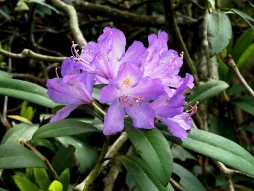
Rhododendron ponticum
Discover
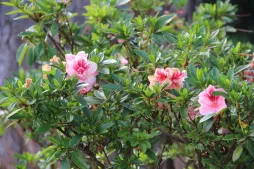
Florist's azalea
Discover
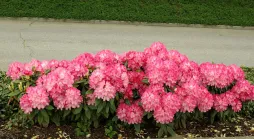
Rhododendron yakushimanum
Discover

Common heather
Discover













